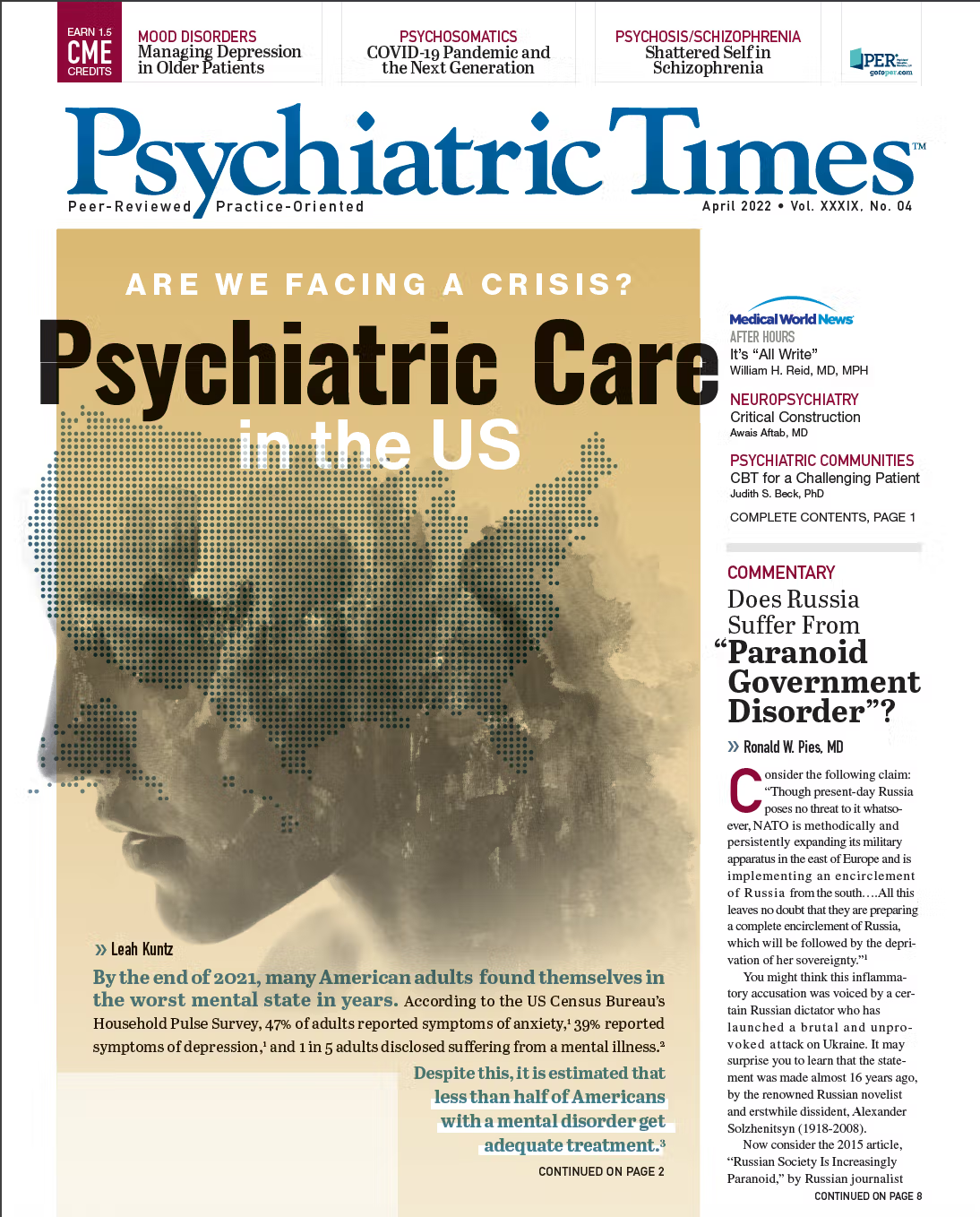Publication
Article
Psychiatric Times
Violence Against Women and Acquired Brain Injuries
Author(s):
Violence against women and resulting traumatic brain injuries increased during the COVID-19 pandemic.
TheVisualsYouNeed/AdobeStock

Violence against women, which can result in traumatic brain injury (TBI) and other acquired brain injuries (ABIs), intensified during the COVID-19 pandemic. A comprehensive and long-term strategy is required to address this issue and to ensure the mental well-being of women.
The Case of Gabby Petito
In July 2021, social media influencer Gabby Petito and her fiancé, Brian Laundrie, embarked on a cross-country road trip captured on Instagram and YouTube.1 In September, Laundrie returned—alone. Weeks later, Petito’s remains were found. It was determined that she died from strangulation, and her case opened a national conversation about intimate partner violence (IPV).2
Tragically, Petito’s case is just 1 of many. There has been an increase in IPV, illuminating a shadow pandemic within the COVID-19 pandemic.3,4 Even before COVID-19, 1 in 3 women (approximately 1.27 billion women worldwide) experienced IPV.5 Further, more than one-third (30,000) of the women killed in 2017 in the US died at the hands of their current or former intimate partner.6 In 2020, calls to helplines increased 5-fold in some countries.4 In some nations, there has been a 300% increase in police reports of IPV, likely fueled by COVID-19 mitigation strategies.4 UN Women projected that an additional 15 million women would be affected by IPV for every 3 months of lockdown.7
The neurological consequences and IPV-related ABIs, including TBI, are devastating. Despite recent increased focus on sports-related TBI, little attention has been paid to TBI resulting from IPV.8 Yet, up to 90% of IPV survivors report head, neck, and facial injuries, which can result in TBI.9,10 One study found that 74% of the women who experienced IPV sustained at least 1 IPV-related TBI and 51% suffered repetitive IPV-related TBIs.11 The study also found higher brain injury scores were negatively associated with memory, learning, and cognitive flexibility and positively associated with a number of measures of psychological distress.11
IPV-related ABI also includes nontraumatic brain injuries. Research has shown that 1 in 10 women has been choked by an intimate partner,12 which can cause hypoxic-anoxic brain injury with long-term implications. Plus, prior nonfatal strangulation has been associated with greater than 6-fold odds of becoming a victim of attempted homicide and more than 7-fold odds of becoming a victim of completed homicide.13 The high-profile strangulation homicide of Petito underscores femicide in IPV, which remains commonplace.2
After the Violence Has Ended
In addition, women who experience IPV also are more likely to suffer from anxiety, depression, posttraumatic stress disorder, suicidal ideation, and other health problems that can last after the violence has ended.4,14
There is also concern that repeated TBIs from IPV may result in chronic traumatic encephalopathy (CTE), a progressive and fatal neurodegenerative disease that cannot be diagnosed until postmortem.8,15-18 For instance, a 1990 report identified a case of a woman who apparently developed CTE from partner abuse.19 In 2021, during a postmortem examination of a young woman who died after a domestic violence incident, immunohistochemical staining for phosphor-τ revealed evidence of CTE-type pathology.20 This marked the first case of CTE pathology in a young woman who experienced IPV. However, there remains a lack of research investigating the long-term neurological consequences; research is needed to understand the potential for misdiagnosis, nondiagnosis, or the development of dementia and Alzheimer disease due to IPV.15,21 The latter is especially important because TBI has been identified as a modifiable risk factor for dementia.22
Current Research
The neurological effects of IPV extend to the family and remain underresearched. A recent Brain Injury Australia report found that of 16,000 survivors of family violence attending Victoria hospitals over a decade’s time, 2 in every 5 had suffered brain injury.23 Further, nearly 1 in 3 of the survivors of family violence were children; of those, 1 in 4 had suffered a brain injury. Because this was not a study of IPV but of hospitalizations, it likely represents the tip of the iceberg. Another study across 5 domestic abuse shelters in Arizona found 9 in every 10 individuals reported a head injury with loss of consciousness from family violence in the preceding 12 months.24 Of those, 9 in 10 reported “too many head injuries to quantify.” Yet only 1 in 5 ever sought medical attention. Thus, community rates of IPV ABI remain radically underresearched.
Most domestic violence shelters and emergency department settings do not assess for TBI, nonfatal strangulation, or other brain injuries from IPV.13,15,25 Plus, many women do not seek medical care for their IPV-related ABI.26 However, even when women interact with health care and domestic violence advocates, there is a lack of training to adequately screen for and address IPV-related ABI.7,23
Further, a study of women in prison found that 78% had significant head injury; 84% had experienced repeated head injury largely due to domestic abuse.27 Yet screening and care for brain injury are not adequately accounted for in the criminal justice system. The staggering number of women who have experienced abuse and are now in prison also further necessitates development of a trauma-informed criminal justice system.
The Brain Health Gap & Brain Capital
IPV-related ABI adds yet another injustice to the brain health gap, which highlights and frames the sex and gender gap in outcomes for brain health disorders across the life span, with strikingly negative outcomes for women.28,29 Research institutions are calling for more female participants in preclinical development of medications, clinical trials, and clinical practice, as well as the expansion of research designed to focus on culturally relevant experiences specific to individuals who identify as female. This will enable collection of more robust and representative data. Big data, real-world evidence, and precision medicine approaches should be used to respond to the call to action. Furthermore, investing in public health efforts is imperative to translate these data and perspectives into action. Women remain underrepresented in health care leadership, underlining the lack of gendered consideration in care. These efforts and initiatives are especially important for research, clinical care, and training related to IPV.
Likewise, the world is suffering a global brain capital collapse.30-32 Brain capital is a novel econometric asset that puts a premium on brain health and skills in our brain economy.30,31 This is a form of capital relevant to a complex, interconnected, and fragile global economy. Brain capital needs to be integral to a new narrative of growth and progress that puts individuals and their well-being, health, interaction with others, and psychological resilience at the center of our economic system. Female empowerment—which includes preventing and addressing violence against women and better identifying and caring for the neurological effects in survivors—is a public and brain health imperative as well as the most effective way to build brain capital globally.
Concluding Thoughts
Addressing gendered violence and related ABIs can be remedied by integrating the social, medical, political, policy, and diplomatic levels. Taking sex and gender into account—including structural and social determinants—is critical for equality in brain health and precision medicine. The Organisation for Economic Co-operation and Development (OECD) New Approaches to Economic Challenges Unit’s Neuroscience-inspired Policy Initiative (NIPI) seeks to tackle this issue.30,31,33 We aim to find new ways to reconceptualize and revitalize the economy and how it works, laying the groundwork to identify relevant metrics while building a transdisciplinary network of stakeholders. The effort draws on experts from medicine, neuroscience, gender analysis, economic policy, philanthropy, and business. The initiative will rapidly refine and advance women’s brain health via a series of research projects, seminars, and clear policy analyses and recommendations. We hope to help build a future in which al individuals are equipped with the support, resources, and care they need to thrive and in turn build a more resilient society and world.
Ms Smith is an Atlantic Fellow for Equity in Brain Health at the Global Brain Health Institute (GBHI) (at the University of California, San Francisco and Trinity College Dublin), a Thiel Fellow at Stanford University and Steering Committee member for NIPI (OECD, Meadows Mental Health Policy Institute and the PRODEO Institute). Mr Rushworth is the CEO of Brain Injury Australia. Dr Valera is an associate professor in psychiatry at Harvard Medical School and a research scientist at Massachusetts General Hospital. Dr Chadha ishead stakeholder, Engagement for Alzheimer disease at Biogen and Pro Bono CEO and cofounder of the Women’s Brain Project. Dr Hynes is head of the OECD New Approaches to Economic Challenges Unit, senior advisor to the OECD secretary general and colead of OECD NIPI. Ms Kawaguchi is advisor to the chief of staff and gender advisor at OECD. Dr Wolfe is a senior clinical advisor for Cohen Veterans Bioscience’s trauma research programs. She serves as strategic advisor coleading CVB’s Suicide Strategy Initiative. Dr Eyre is colead of OECD NIPI, strategic advisor to the HEKA Fund (Newfund Capital and Fondation FondaMental), steering committee member for the Brain Health Nexus at Cohen Veterans Bioscience, and holds adjunct roles with IMPACT at Deakin University, GBHI, and Baylor College of Medicine.
References
1. Rosman K. How the case of Gabrielle Petito galvanized the internet. The New York Times. October 20, 2021. Accessed November 20, 2021. https://www.nytimes.com/2021/09/20/style/gabby-petito-case-tiktok-social-media.html
2. Santucci J. Gabby Petito was strangled. Experts say such an assault is a red flag for intimate partner homicides. USA Today. October 12, 2021. Updated October 13, 2021. Accessed November 20, 2021. https://www.usatoday.com/story/news/nation/2021/10/12/gabby-petito-strangled-experts-say-its-common-intimate-partner-violence/8426282002/
3. Evans ML, Lindauer M, Farrell ME. A pandemic within a pandemic - intimate partner violence during Covid-19. N Engl J Med. 2020;383(24):2302-2304.
4. Valera EM. When pandemics clash: gendered violence-related traumatic brain injuries in women since COVID-19. EClinicalMedicine. 2020;24:100423.
5. Breiding MJ, Smith SG, Basile KC, et al. Prevalence and characteristics of sexual violence, stalking, and intimate partner violence victimization—national intimate partner and sexual violence survey, United States, 2011. MMWR Surveill Summ. 2014;63(8):1-18.
6. United Nations Office on Drugs and Crime. Global study on homicide: gender-related killing of women and girls. 2018. Accessed November 20, 2021. https://www.unodc.org/documents/data-and-analysis/GSH2018/GSH18_Gender-related_killing_of_women_and_girls.pdf
7. Mlambo-Ngcuka P. Gender-based violence: we must flatten the curve of this shadow pandemic. November-December 2020. Accessed November 20, 2021. https://www.un.org/africarenewal/magazine/november-december-2020/gender-based-violence-we-must-flatten-curve-shadow-pandemic
8. Pandaram J. Concussion in sport: domestic violence victims show same brain injury trauma as athletes with CTE. The Daily Telegraph. April 18, 2021.
9. St Ivany A, Schminkey D. Intimate partner violence and traumatic brain injury: state of the science and next steps. Fam Community Health. 2016;39(2):129-137.
10. Liu LY, Bush WS, Koyutürk M, Karakurt G. Interplay between traumatic brain injury and intimate partner violence: data driven analysis utilizing electronic health records. BMC Womens Health. 2020;20(1):269.
11. Valera EM, Berenbaum H. Brain injury in battered women. J Consult Clin Psychol. 2003;71(4):797-804.
12. Monahan K, Purushotham A, Biegon A. Neurological implications of nonfatal strangulation and intimate partner violence. Future Neurology. 2019;14(3).
13. Glass N, Laughon K, Campbell J, et al. Non-fatal strangulation is an important risk factor for homicide of women. J Emerg Med. 2008;35(3):329-335.
14. Lagdon S, Armour C, Stringer M. Adult experience of mental health outcomes as a result of intimate partner violence victimisation: a systematic review. Eur J Psychotraumatol. 2014;5.
15. Monahan K. Intimate partner violence, traumatic brain injury, and social work: moving forward. Soc Work. 2018;63(2):179-181.
16. Monahan K. Intimate partner violence and traumatic brain injury: a public health issue. J Neurol Neuromed. 2018;3(3):3-6.
17. Stern RA, Daneshvar DH, Baugh CM, et al. Clinical presentation of chronic traumatic encephalopathy. Neurology. 2013;81(13):1122-1129.
18. Baugh CM, Stamm JM, Riley DO, et al. Chronic traumatic encephalopathy: neurodegeneration following repetitive concussive and subconcussive brain trauma. Brain Imaging Behav. 2012;6(2):244-254.
19. Roberts GW, Whitwell HL, Acland PR, Bruton CJ. Dementia in a punch-drunk wife. Lancet. 1990;335(8694):918-919.
20. Danielsen T, Hauch C, Kelly L, White CL. Chronic traumatic encephalopathy (CTE)-type neuropathology in a young victim of domestic abuse. J Neuropathol Exp Neurol. 2021;80(6):624-627.
21. Leung FH, Thompson K, Weaver DF. Evaluating spousal abuse as a potential risk factor for Alzheimer’s disease: rationale, needs and challenges. Neuroepidemiology. 2006;27(1):13-16.
22. Livingston G, Huntley J, Sommerlad A, et al. Dementia prevention, intervention, and care: 2020 report of the Lancet Commission. Lancet. 2020;396(10248):413-446.
23. Brain Injury Australia. The prevalence of acquired brain injury among victims and perpetrators of family violence. 2018. Accessed November 20, 2021. https://www.braininjuryaustralia.org.au/wp-content/uploads/BRAININJURYAUSTRALIAfamilyviolencebraininjuryFINAL.pdf
24. Zieman G, Bridwell A, Cárdenas JF. Traumatic brain injury in domestic violence victims: a retrospective study at the Barrow Neurological Institute. J Neurotrauma. 2017;34(4):876-880.
25. Meyer JE, Jammula V, Arnett PA. Head trauma in a community-based sample of victims of intimate partner violence: prevalence, mechanisms of injury and symptom presentation. J Interpers Violence. Published online May 15, 2021;8862605211016362.
26. Valera E, Kucyi A. Brain injury in women experiencing intimate partner-violence: neural mechanistic evidence of an “invisible” trauma. Brain Imaging Behav. 2017;11(6):1664-1677.
27. McMillan TM, Aslam H, Crowe E, et al. Associations between significant head injury and persisting disability and violent crime in women in prison in Scotland, UK: a cross-sectional study. Lancet Psychiatry. 2021;8(6):512-520.
28. Aragam GG, Kawaguchi N, Hynes W, et al. Highlighting brain-based inequalities for women: from bedside and boardroom to policy. Psychiatric Times. May 5, 2021. Accessed November 20, 2021. https://www.psychiatrictimes.com/view/brain-based-inequalities-women
29. Smith E, Kawaguchi N, Chapman SB, et al. Closing the brain health gap: addressing women’s inequalities. Oxford University Press Blog. August 21, 2021. Accessed November 20, 2021. https://blog.oup.com/2021/08/closing-the-brain-health-gap-addressing-womens-inequalities/
30. Smith E, Ali D, Wilkerson B, et al. A brain capital grand strategy: toward economic reimagination. Mol Psychiatry. 2021;26(1):3-22.
31. Eyre HA, Ayadi R, Ellsworth W, et al. Building brain capital. Neuron. 2021;109(9):1430-1432.
32. Ellsworth W, Smith E, Chapman SB, et al. Move over data, brain capital is the new oil. Psychiatric Times. January 14, 2021. Accessed November 20, 2021. https://www.psychiatrictimes.com/view/move-over-data-brain-capital-is-the-new-oil
33. Neuroscience-inspired policy initiative. Organisation for Economic Co-operation and Development. Accessed November 20, 2021. https://www.oecd.org/naec/brain-capital/ ❒







